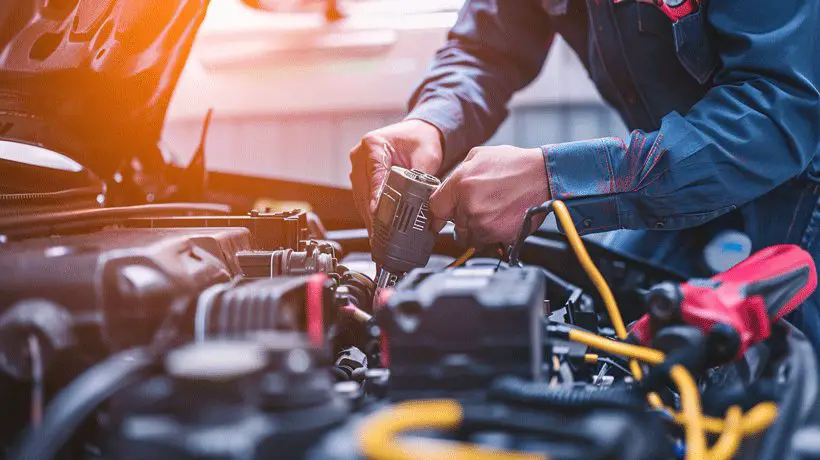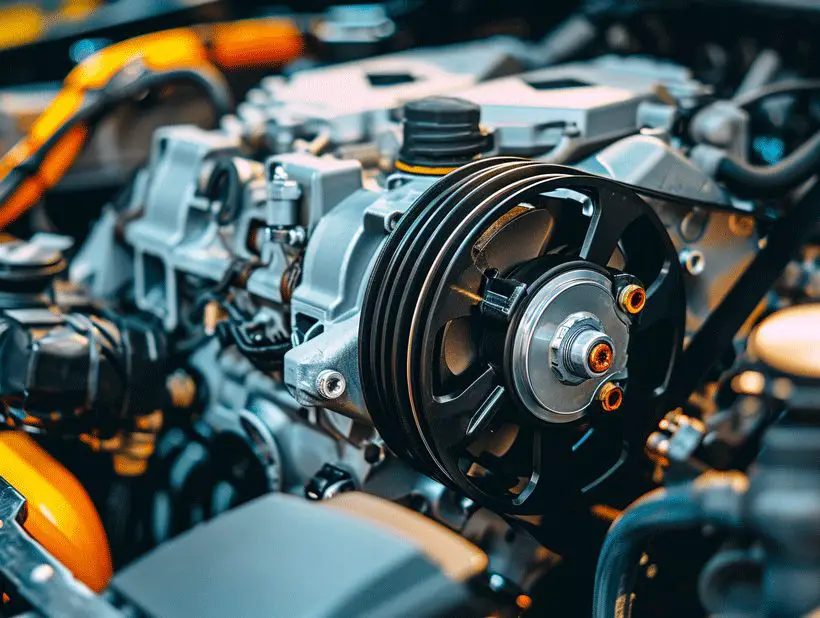Ever had that sinking feeling when your car refuses to start, leaving you stranded? It might not just be a bad battery; the culprit could be a failing alternator. As a seasoned car enthusiast, I’ve seen my fair share of charging system woes, and I’m here to guide you through diagnosing a bad alternator.
Understanding the signs of alternator trouble is key to keeping your ride reliable. From dimming headlights to that ominous battery warning light, knowing what to look for can save you time and money. Let’s dive into the world of alternators and uncover the mystery behind your car’s charging system.
What is an Alternator?
When I’m under the hood, the alternator stands out as a critical component, though it’s one that’s often overlooked until trouble arises. It functions as a powerhouse for the car, converting mechanical energy into electrical energy that keeps the battery charged and the vehicle‚Äôs electrical system running smoothly.
Essentially, the alternator generates alternating current (AC) that is then converted to direct current (DC), which powers the car’s accessories and recharges the battery. Every time I start the engine and use electronics like the radio, lights, or air conditioning, I’m relying on the alternator to keep everything powered without draining the battery.

Modern vehicles come with a serpentine belt that drives the alternator. As the engine rotates, the belt turns the alternator’s rotor at a high speed. Inside the alternator, there‚Äôs a magnetic field created that, once in motion, induces electrical current. The rectifier inside the alternator takes this AC current and converts it to DC, suitable for the car‚Äôs electrical needs.
It’s also equipped with a voltage regulator that ensures the output remains consistent, regardless of engine speed. This prevents overcharging and potential damage to the battery and electronic components. Monitoring this is vital because any fluctuation in output can flag a potential alternator issue.
While the battery gets the car started, the alternator keeps it running by supplying power. So, it goes without saying that a properly functioning alternator is indispensable for a car’s operation. I’m particularly attentive to the symptoms that may point to a failing alternator because understanding and diagnosing these issues early can save a lot of trouble on the road.
How Does an Alternator Work?

Ever wondered what keeps your car‚Äôs electrical system up and running? It’s the alternator, a pivotal component under the hood. Let’s demystify its operation. Imagine the alternator as a powerhouse that starts working the moment your engine fires up. It spins in unison with the engine, thanks to the serpentine belt. This motion is crucial because it’s what allows the alternator to generate power.
Inside an alternator, you’ll find a rotor spinning at high speeds alongside a stationary set called the stator. The rotor, composed of a group of magnets, revolves around the stator, which contains coils of wire. The movement creates a magnetic field that generates alternating current (AC) electricity. However, since your car operates on direct current (DC) electricity, this AC electricity must be converted.
Enter the rectifier, the component responsible for this conversion. It’s a collection of diodes that efficiently transforms the AC into DC, ensuring your vehicle’s battery stays charged and your headlights remain bright. Without this piece, you’d be dealing with a dead battery in no time.
But power generation must be regulated, and that’s where the voltage regulator comes into play. This device ensures the outputted electricity is at a safe level for your car’s battery and its electrical components. Too much voltage could fry circuits, while too little may lead to undercharging the battery.
Remember, a seamlessly operating alternator is critical to your vehicle’s health. Knowing these fundamentals helps you spot issues when they arise. Say your headlights start dimming or the battery dies unexpectedly; these could be telltale signs your alternator needs a look. Keep an ear out for unusual noises or check for the battery warning light on your dashboard, as these are other common indicators that something’s amiss with your alternator. Being attuned to these signs helps you tackle alternator issues before they escalate into more significant problems.
Common Signs of a Bad Alternator
When your car’s alternator starts to fail, it often gives off a few telltale signs. I’ll guide you through some common symptoms that might indicate your alternator needs attention. Timely recognition of these issues can save you from a potential vehicular breakdown.
One classic sign is dimming or overly bright lights. This happens because the alternator’s output fluctuates, affecting the power supply to your car’s lighting system. Notice your headlights or dashboard lights‚Äîthey might brighten when accelerating and dim during idle. It’s also possible you’ll experience flickering lights, which is a clear red flag.

Another indicator you can’t ignore is a warning light on your dashboard. Many modern cars have a dedicated battery or alternator warning light that can appear as a battery symbol or the letters ‘ALT’. This light typically illuminates when the alternator’s voltage output is outside the normal range.
You might also hear strange noises under the hood. Alternators have bearings that can wear out over time, leading to a grinding or whining noise that’s especially apparent when you start the engine or accelerate.
Other symptoms include:
- Electrical issues: Electrically powered components like power windows and radios may malfunction.
- Battery problems: A failing alternator will lead to a constantly draining battery. If you’ve had to jump-start your car frequently, it may be a sign that the alternator is not charging the battery adequately.
- Engine stalling: For cars with heavy reliance on electric fuel pumps, a bad alternator can result in the engine stalling or struggling to run smoothly.
I advise using a multimeter to check the voltage level of your car’s battery. With the engine off, a healthy battery should read around 12.6 volts. With the engine running, the voltage should be between 13.7 and 14.7 volts if the alternator is charging correctly. Discrepancies in these readings could point to an alternator issue.
Testing Your Alternator
After noticing the common signs of a faulty alternator, it’s crucial to perform some diagnostic tests to confirm the health of your car’s charging system. I’ve used a few tried-and-true methods over the years to test alternators, and I’ll share some of these techniques with you.

Visual Inspection
First things first, I often begin with a visual inspection. Look for loose connections or worn-out belts that might affect the alternator’s performance. Sometimes the solution is as simple as tightening a bolt or replacing a belt.
Multimeter Test
The multimeter test is a reliable way to assess your alternator’s condition. With the engine off, connect a multimeter to your battery; a healthy battery should read around 12.6 volts. Start your car, and the voltage on the multimeter should increase to anywhere between 13.7 and 14.7 volts. If the reading is outside this range, it could indicate that the alternator is not charging the battery sufficiently.
| Engine State | Expected Voltage (Volts) |
|---|---|
| Engine Off | ~12.6 |
| Engine Running | 13.7 to 14.7 |
Load Test
Another step is the load test. With the engine running, turn on high-demand accessories like the heater and headlights. If the voltage drops below 13 volts during this load test, it’s likely that the alternator cannot cope with the demand.
Listening Carefully
While performing these tests, I always pay attention to the sounds my car makes. An alternator in distress might emit a growling sound or a high-pitched whine. These sounds can indicate internal parts are wearing out and that the alternator may soon fail.
Through these methods, I’ve pinpointed alternator issues with a high degree of accuracy. By catching these problems early, I’ve saved myself time and money, and by following these steps, you can too. Remember to take proper safety precautions when working on your vehicle, and consult a professional if you’re unsure about any part of the testing process.
Alternator Repair and Replacement
When I’m under the hood with my tools in hand, deciding between repair or replacement of an alternator isn’t taken lightly. Cost efficiency and longevity are my top priorities. Sometimes, if it’s a matter of worn brushes or a faulty voltage regulator, a repair might do the trick. I find these components can often be replaced without needing a whole new unit.
For the more mechanically inclined, diy alternator repair can be a satisfying challenge. But it requires a clear understanding of the electrical system and meticulous attention to detail. I make sure to always disconnect the battery before attempting any repairs to prevent any electrical mishaps.

However, if I uncover extensive damage or wear beyond simple fixes, I lean toward replacement. Aftermarket alternators are readily available, but it’s crucial to match the specifications precisely to your vehicle’s needs. I’ve seen too many folks choose a less expensive model, only to face the same issue down the road.
Installation of a new alternator is straightforward for those with some technical know-how. I secure all connections, ensure belts are properly tensioned, and double-check for proper alignment. An incorrectly installed alternator can cause more harm than good, leading to inefficient charging or even belt damage.
Regular maintenance and timely intervention when issues arise can keep alternator problems at bay. I maintain a schedule to inspect the charging system, looking for early signs of alternator failure. Some symptoms are subtle, like dim lights or slow accessories, so I don’t wait for a complete breakdown to take action.
Despite all efforts, if you’re met with a vehicle that refuses to stay charged, consulting a professional may be in your best interest. I’ve found that a trusted mechanic with a good track record can provide peace of mind with quality repairs or a dependable replacement, ensuring you’re back on the road with minimal fuss.
Conclusion
Diagnosing a bad alternator is essential to ensuring your car runs smoothly and avoids potential electrical failures. I’ve outlined how to spot the signs of a malfunctioning alternator and discussed when it’s better to repair or replace it. Remember, precise matching and correct installation are key to a successful alternator fix. Don’t forget that regular maintenance can ward off many issues. If you’re ever in doubt, it’s wise to seek professional advice to keep your car’s charging system in top condition. Trust me, your vehicle will thank you for the attention to its power source with improved performance and reliability.
